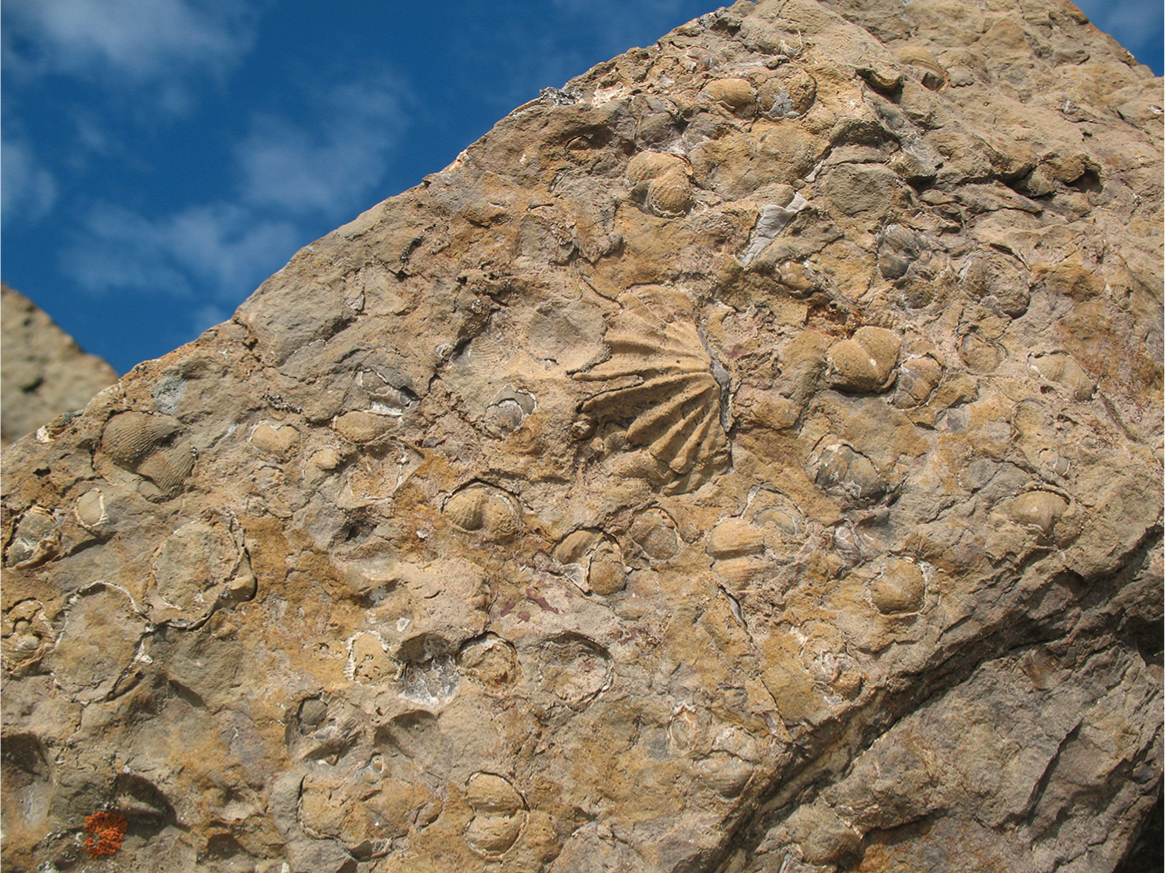
Plate 1. Bedding plane covered in Permian brachiopods (Spitsbergen, Norway), which were soon to be victims of the Capitanian mass extinction.

Plate 1. Bedding plane covered in Permian brachiopods (Spitsbergen, Norway), which were soon to be victims of the Capitanian mass extinction.

Plate 2. David Bond pointing his rifle at the point where Capitanian brachiopods go extinct in Spitsbergen, Norway.

Plate 3. Simon Bottrell (University of Leeds) admiring some pillow basalt lavas of the Emeishan large igneous province, Yunnan, China.
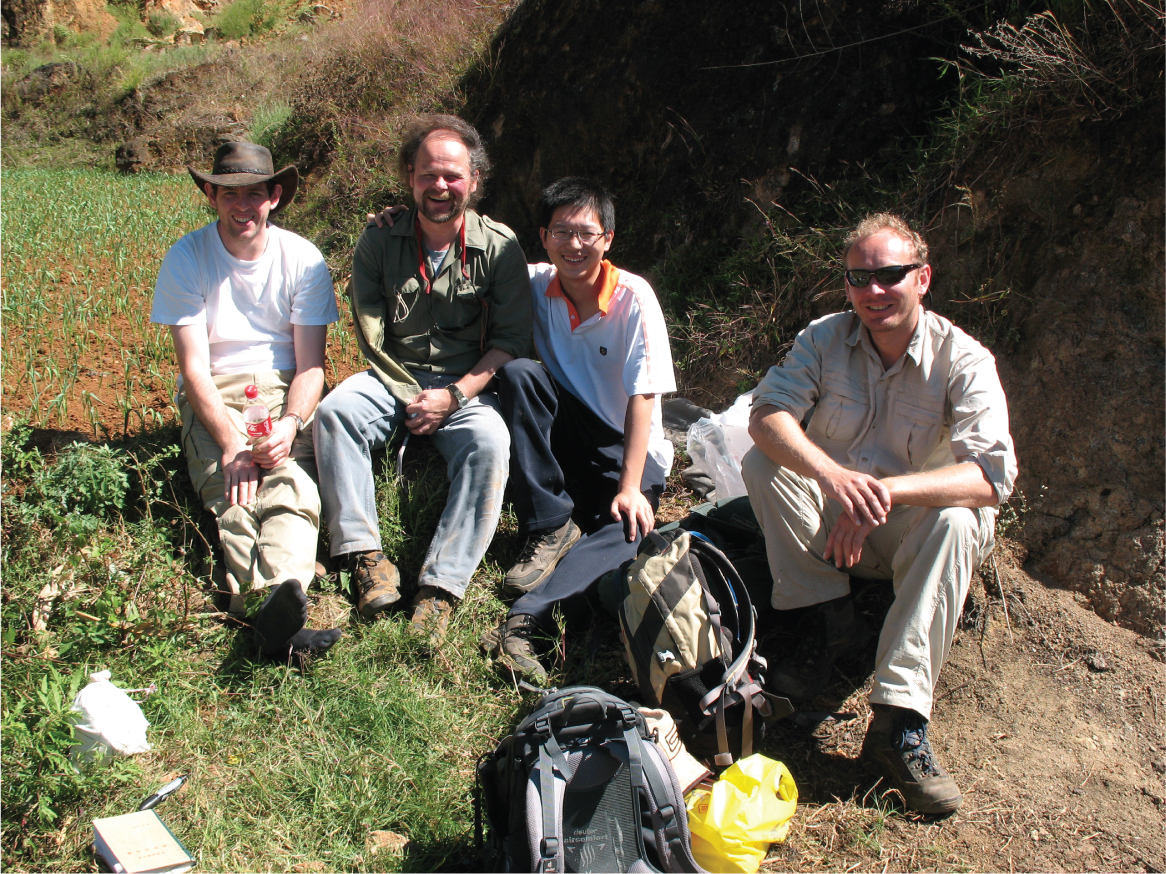
Plate 4. The A team enjoying fieldwork in western Yunnan, China. Left to right: David Bond, Mike Widdowson, Sun Yadong, and Dougal Jerram.
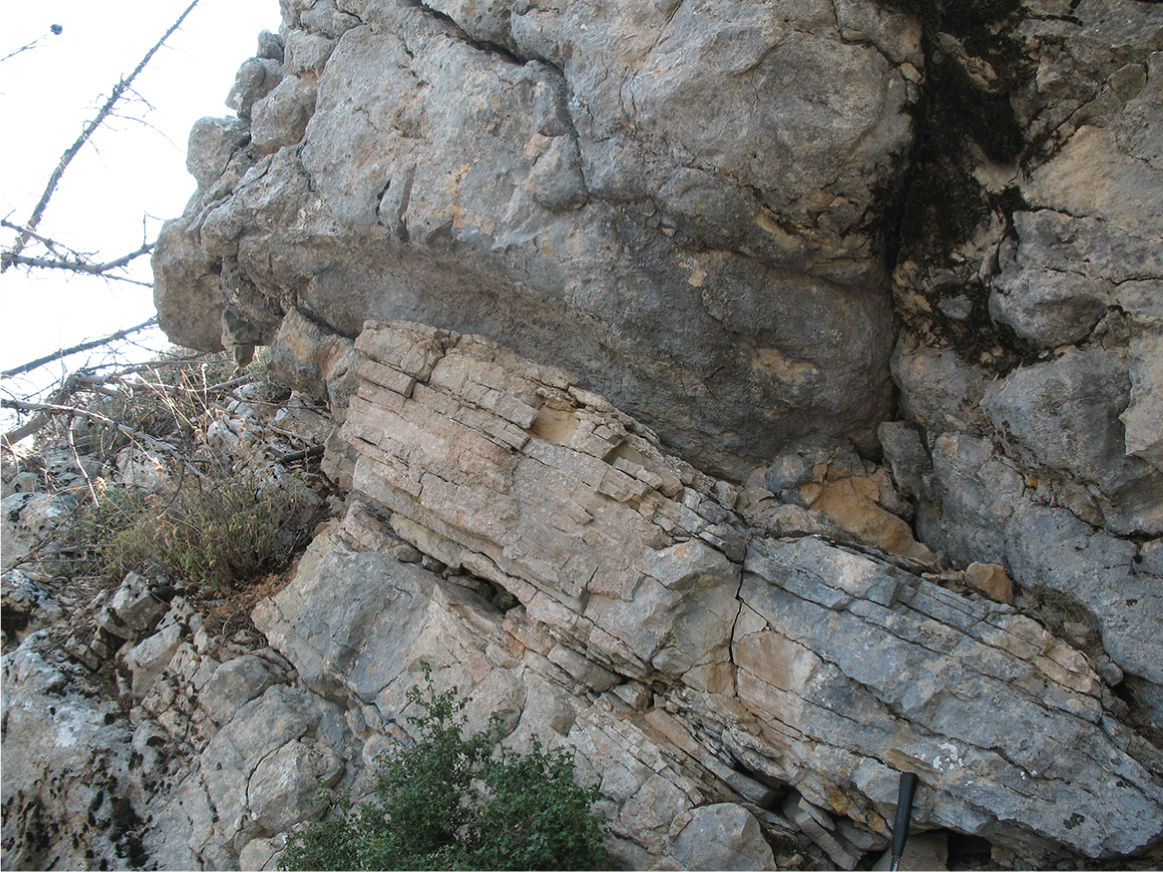
Plate 5. The Permian-Triassic boundary seen in Anatolia, Turkey. Well-bedded fossiliferous limestones in the lower part of the cliff face give way to massive microbial limestones of Triassic age.

Plate 6. Sausserberget Mountain top in central Spitsbergen, Norway. The geologists walk on dark shales of the Triassic Period, which contrast with the underlying cliff-forming cherts of the Permian.

Plate 7. Early Triassic bivalves, some of the few fossils that are common at this time.
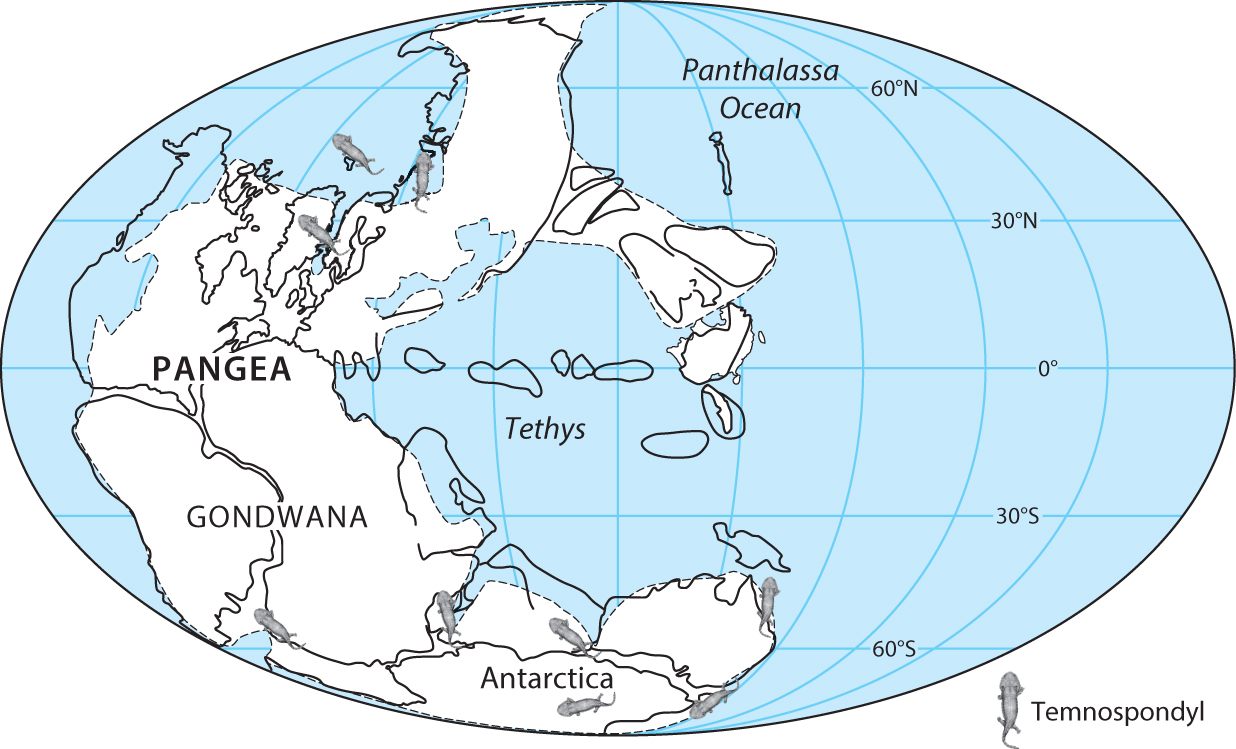
Plate 8. The Early Triassic world showing the distribution of temnospondyl amphibians, which were avoiding overly hot equatorial latitudes at this time.
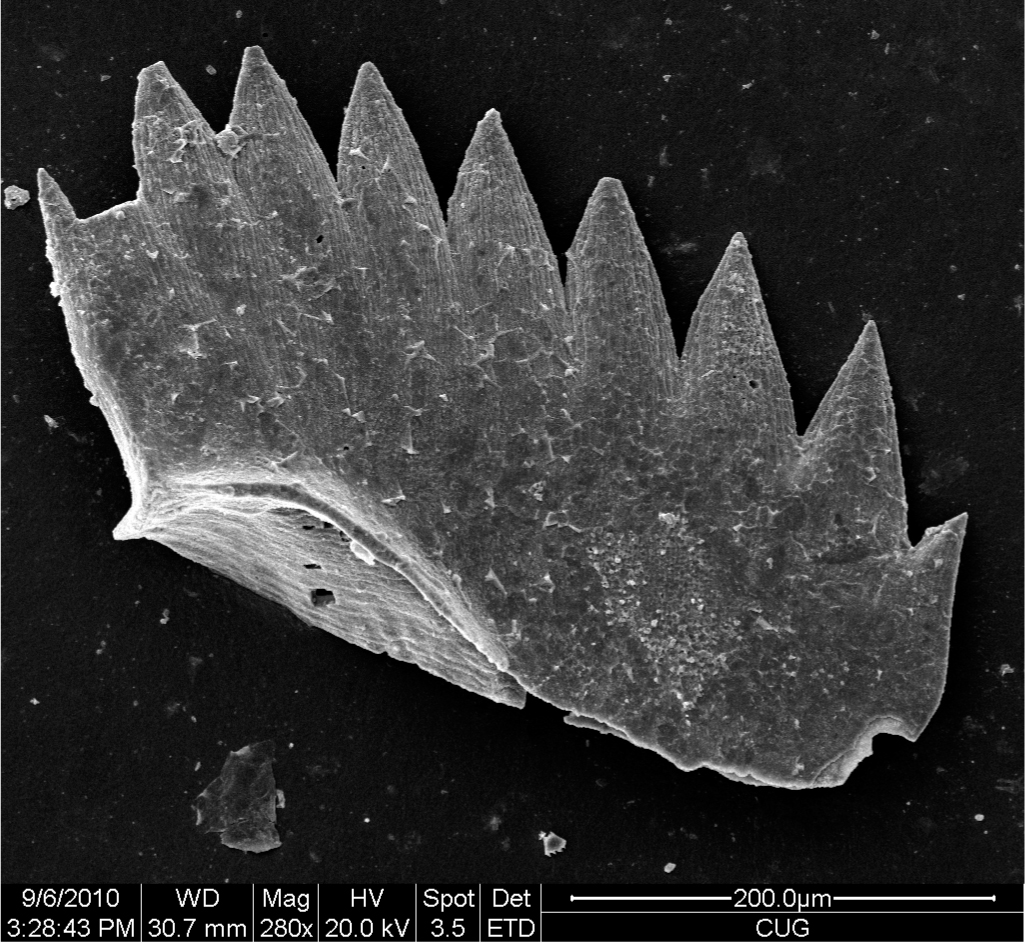
Plate 9. Neospathodus, a conodont from the earliest Triassic of South China, collected by Sun Yadong. Less than 0.5 millimeters in length, such fossils have proved very useful for dating rocks.

Plate 10. A quarry face in a Late Triassic reef, Bavaria. The finger points to valves of megalodontid bivalves, and the white tubes are scleractinian corals. All species in this reef were wiped out by the end-Triassic mass extinction.

Plate 11. A mountain of Triassic rock seen in the Dolomites of northern Italy. Sandstones of Carnian age form the lower cliff face, and the upper cliff is formed of Norian limestone.
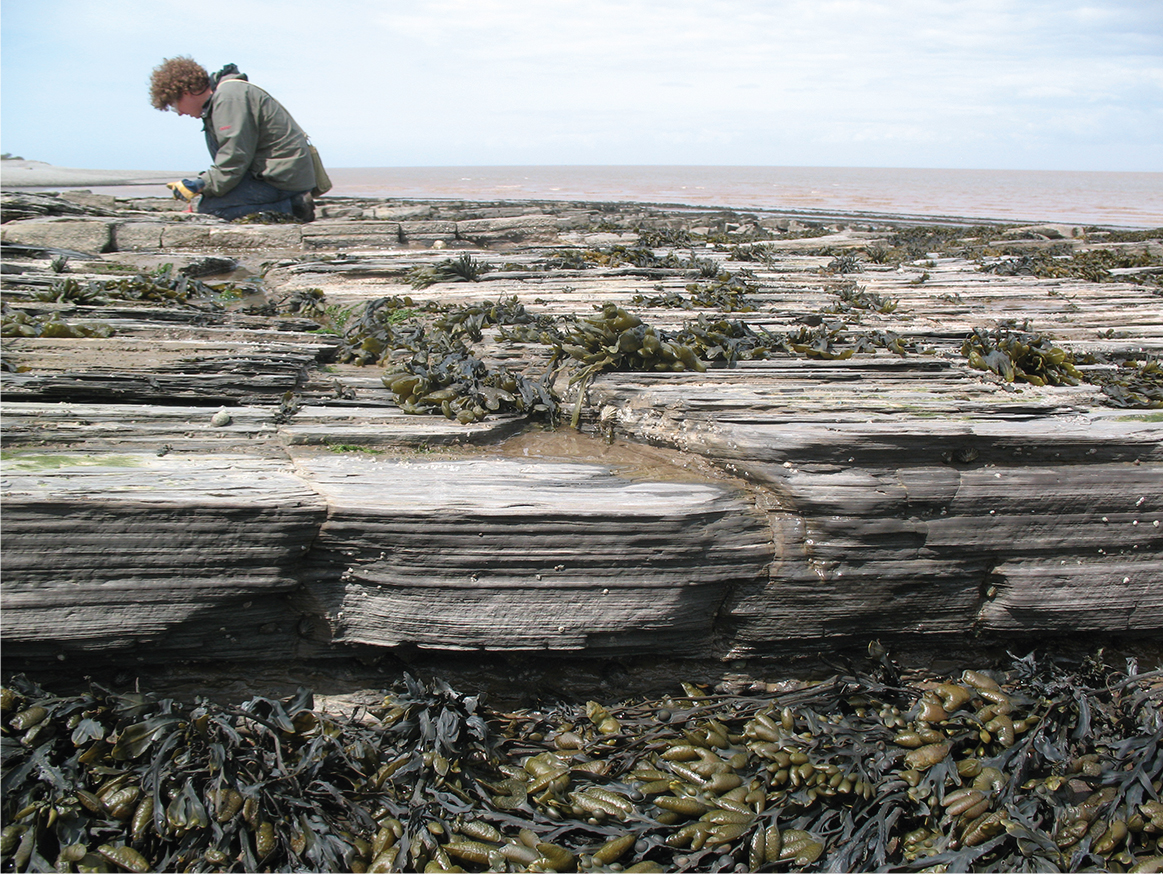
Plate 12. Rob Newton examining beautifully laminated shales of the Early Jurassic Period, Somerset coast, England.

Plate 13. A block of sandstone from the Late Triassic Period, Somerset coast, England, with the inevitable hammer resting alongside. Earthquakes linked to the massive volcanic activity at this time probably caused the contortions of the layers in this rock.

Plate 14. Kettleness cliff, Yorkshire coast, England. The Early Jurassic (Toarcian) extinction occurs just beneath the top of the cliff, where soft-weathering shales give way to harder, black shales called the Jet Rock.
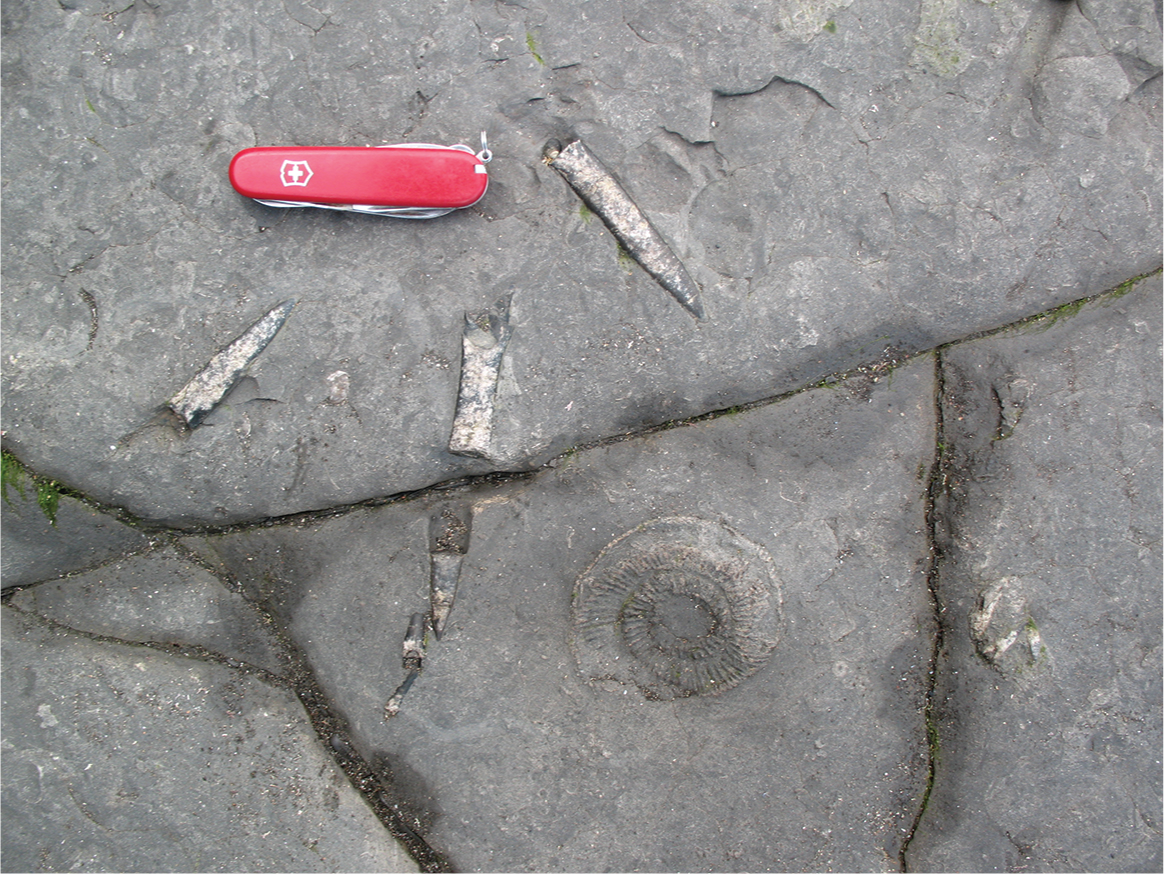
Plate 15. Bullet-shaped belemnites and an ammonite seen in Toarcian shales, Yorkshire, England. The belemnites are beloved of geochemists because they provide information about seawater temperatures.

Plate 16. Flood basalt landscape seen at Gásadalur in the Faroe Islands. These lavas erupted 60 million years ago and only had a modest effect on the climate, unlike the more devastating eruptions at the time of Pangea.